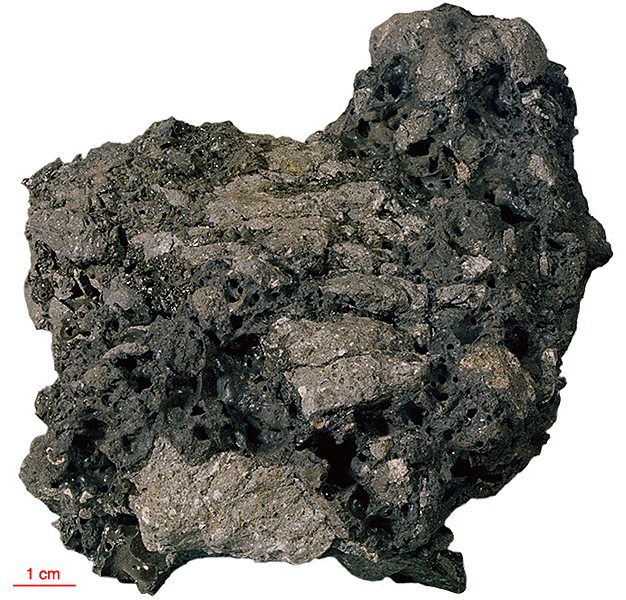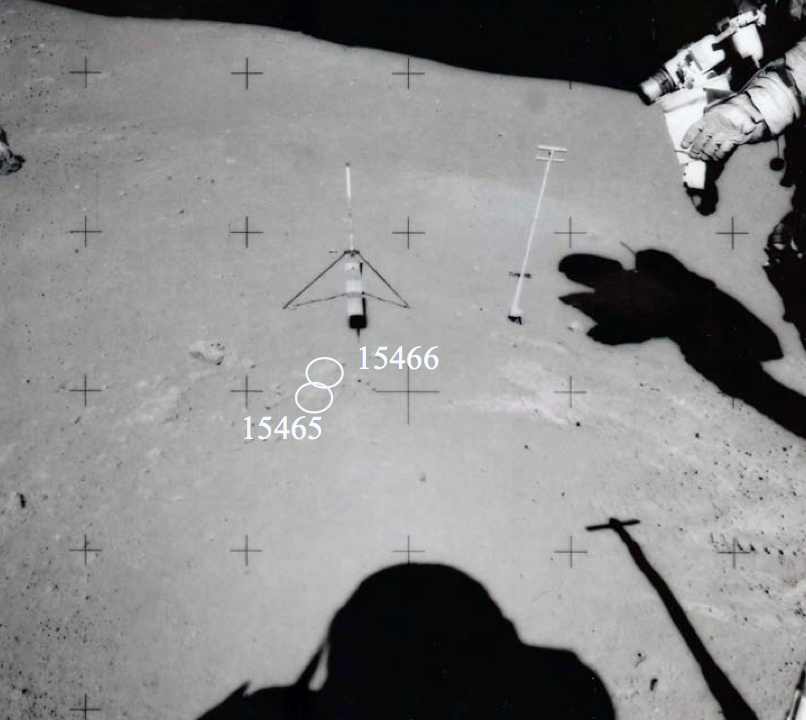
Fact sheet
15465 to 15468 are a collection of breccia fragments cemented together with a vesicular black glass. Within the breccias are numerous lithic clasts. Between 5–10 % of 15465 is made up of crystalline rock fragments (mare basalt, KREEP basalt and recrystallised norite). About half of the lithic fragments are KREEP basalt. The KREEP basalt fragments contain relatively sodic plagioclase and distinctive pyroxene zoning. The fragments of recrystallised norite are brecciated and thermally annealed, but also contain low-Ca, high-Mg orthopyroxene. Rotation 1 shows some of the black glass (pale green in thin section) adjacent to breccia containing glass beads of a similar composition. Rotation 2 shows more glass beads and rock (KREEP basalt) and mineral clasts in a glassy groundmass.
The sample weighed 376 grams before analysis and has been dated at 3.91 billion years (Ar/Ar).
Further details of this and other Apollo samples are here: http://curator.jsc.nasa.gov/lunar/
KREEP is an acronym built from the letters K (the atomic symbol for potassium), REE (Rare Earth Elements) and P (for phosphorus). It is a geochemical component of some lunar impact breccia and basaltic rocks.
The Apollo 15 landing site was in the Apennine Highlands, and close to Hadley Rille — a long, narrow winding valley. Approximately 76 kg of lunar material, including soil, rock, core-tube and deep-core samples, were returned to Earth.
This mission was the first flight of the Lunar Roving Vehicle which allowed the astronauts to venture further from the Lunar Module than in previous missions. During three periods of extravehicular activity, or EVA, on July 31st, and August 1st and 2nd, Scott and Irwin completed a record 18 hours, 37 minutes of exploration, travelling 17.5 miles, in the first car that humans had ever driven on the Moon.
Apollo 15 was launched on 26 July 1971.







